Idea by
Matthew Darmour-Paul
https://www.instagram.com/mdarmourpaul/
Call for ideas 2019
Onsite/Offset
Onsite/Offset
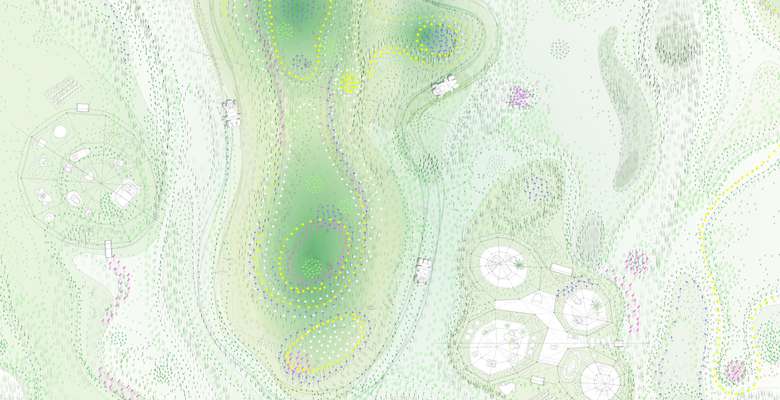
- New alliances
Across the United States, agricultural land is being converted into wetland mitigation and biodiversity banks. As a neoliberal update to environmental protection legislation, these newly financialised ecosystems are used to offset ecological damage to wetlands and critical habitats in the face of development; wetlands which, in line with the No Net Loss Policy enacted by George W. Bush in 1989 and endorsed by every subsequent president, must not decrease but be maintained in acreage across the nation in perpetuity. I.e. an acre of lost wetland ‘here’ is acceptable so long as an acre of wetland ‘elsewhere’ is restored. How can architecture participate in the financialization of nature and more broadly in environmental transactions? How can thinking with vernal pools - to borrow from Eduardo Kohn’s work on biosemiotics - open up architecture to consider the existential motives and not just the functions of nonhuman life?
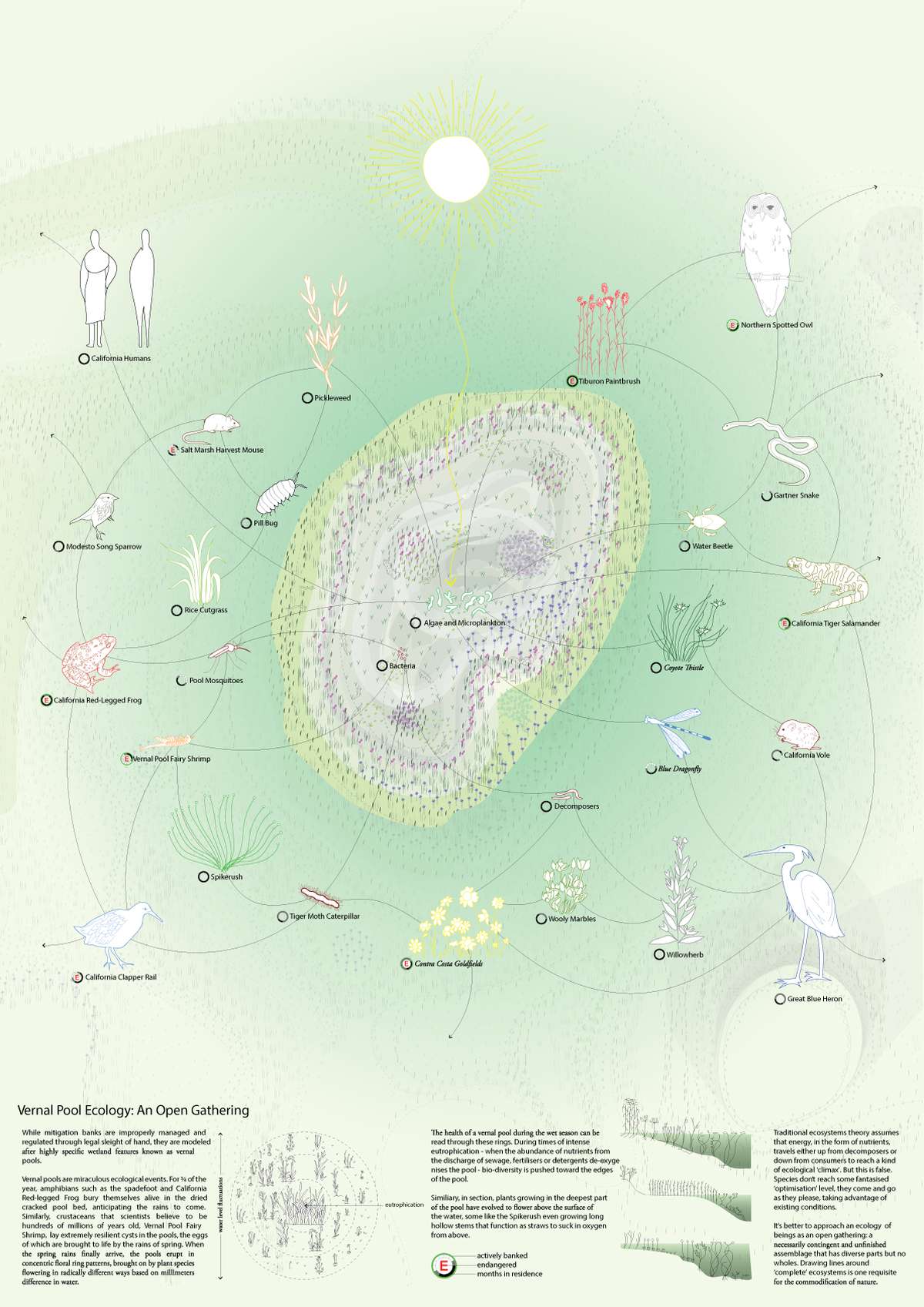
While mitigation banks are improperly managed and regulated through legal sleight of hand, they are modelled after highly specific wetland features known as vernal pools.
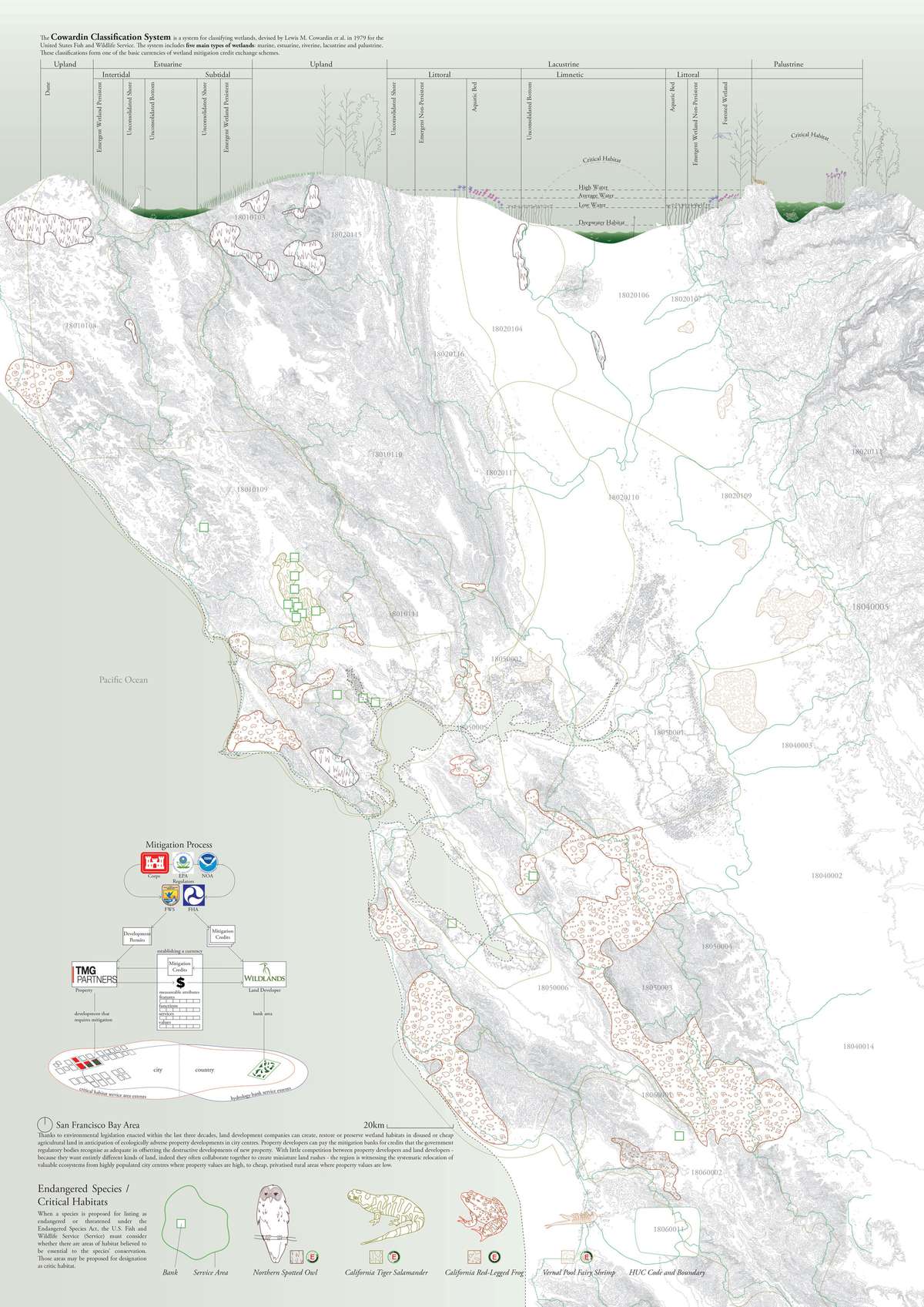
The state of California boasts the highest number of endangered and therefore banked species in the world, thanks in part to its history of wildlife conservation, it’s enthusiasm toward the green economy and its liberal commitment to financial speculation.
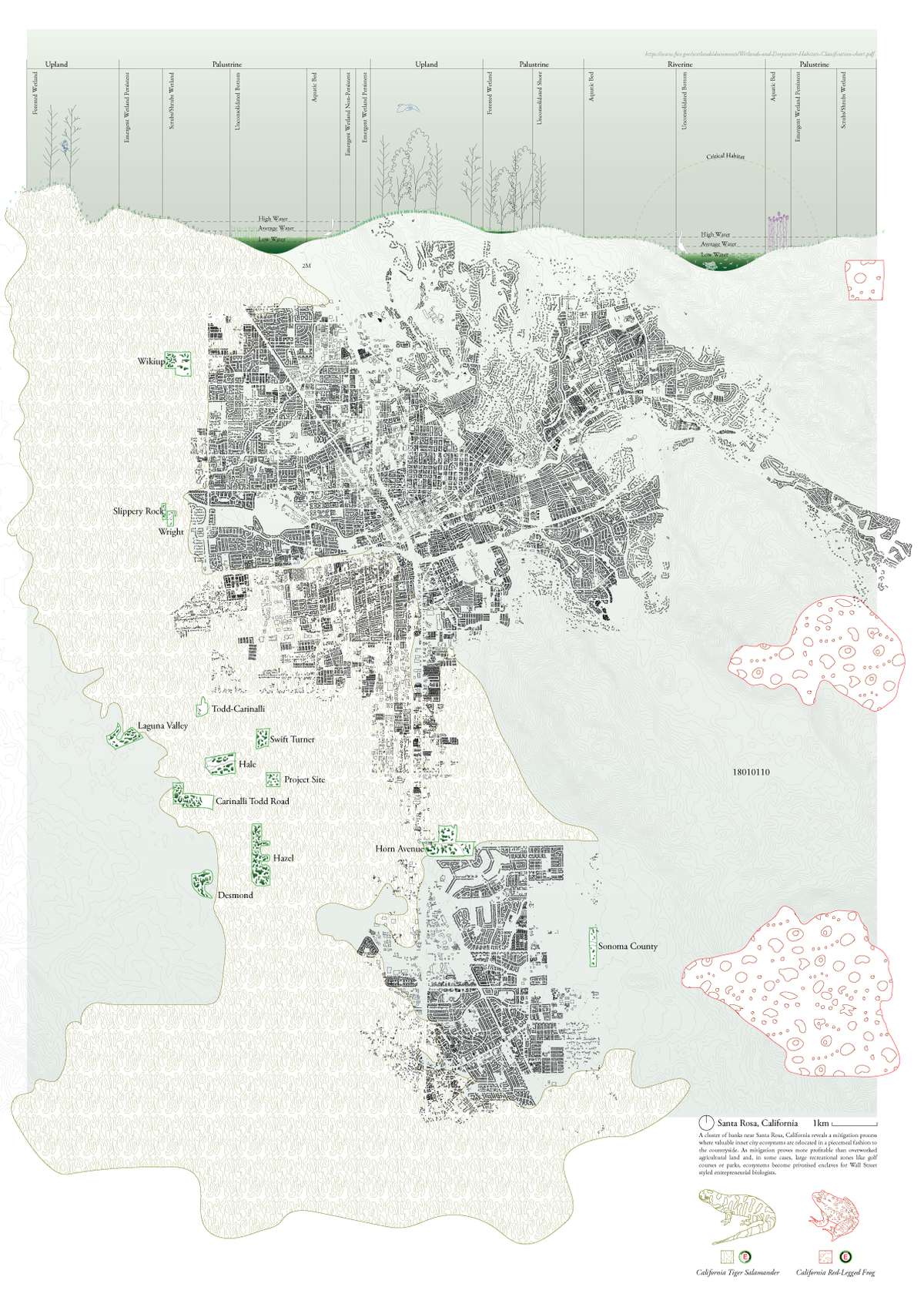
A cluster of banks near Santa Rosa, California, reveals a mitigation process where valuable inner city ecosystems are relocated in a piecemeal fashion to the countryside.
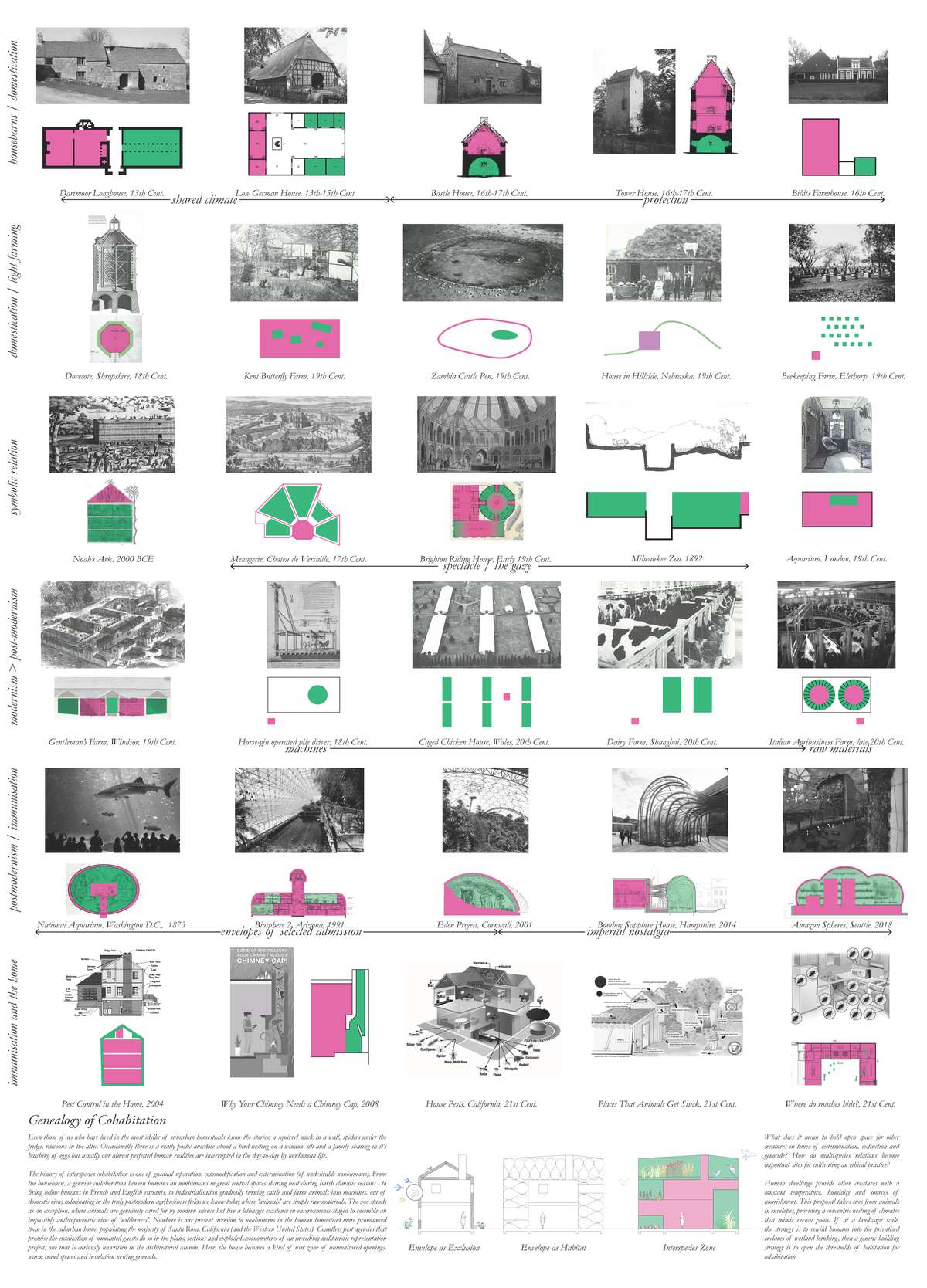
The history of interspecies cohabitation is one of gradual separation, commodification and extermination. From the housebarn, a genuine collaboration beween humans an nonhumans in great central spaces sharing heat during harsh climatic seasons - to living below humans in French and English variants, to industrialisation gradually turning cattle and farm animals into machines, out of domestic view, culminating in the truly postmodern agribusiness fields we know today.
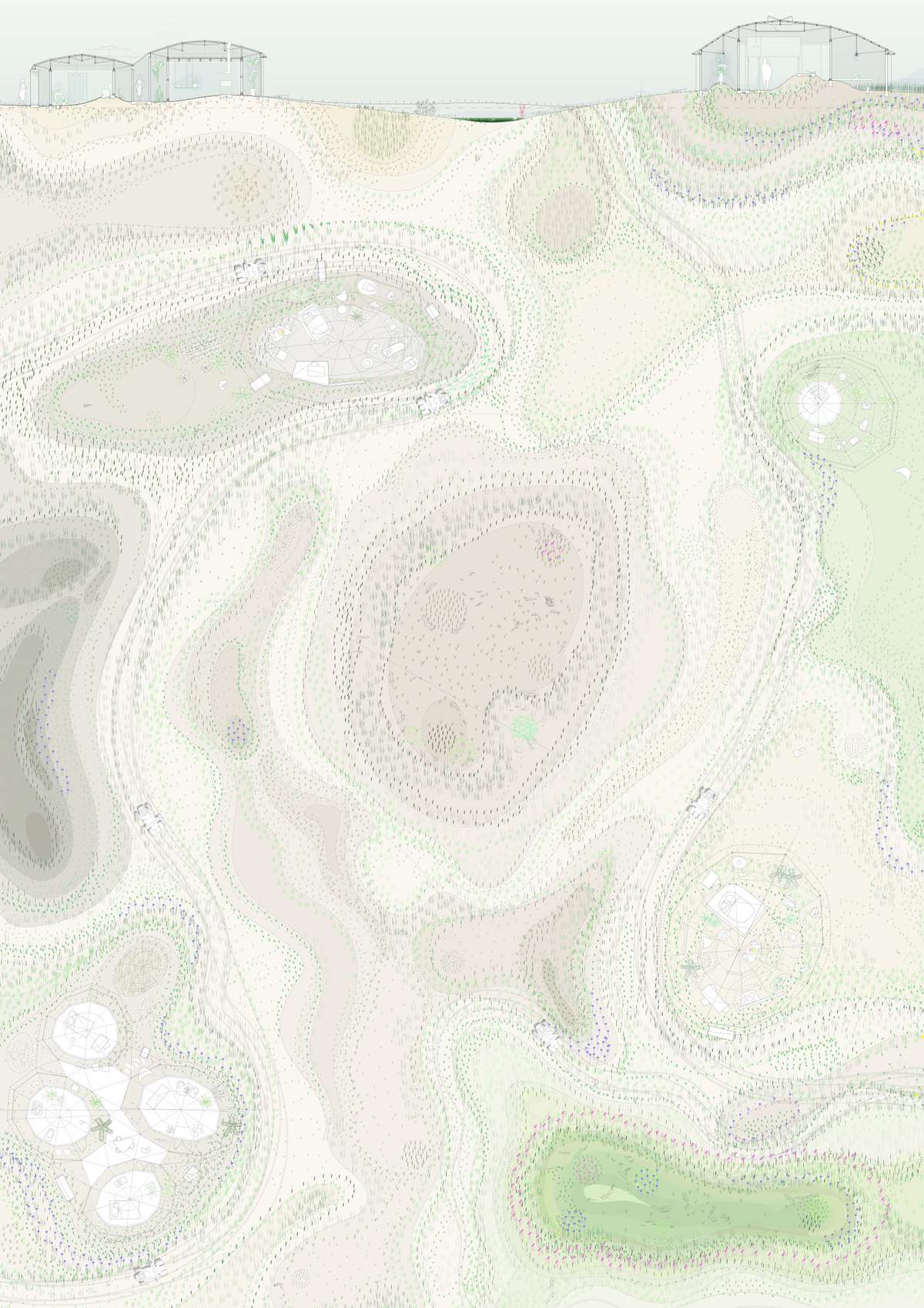
The composition of the Vernal Estate takes cues from the pools from which they are named, providing a concentric nesting of climates that humans and nonhumans can take advantage of. Most of the human dwelling happens in an expanded occupation of the site while the pools are dry and contracted. When the pools are flooded, the site is unified by the grasses and species of the vernal event.
Onsite/Offset
Onsite/Offset

- New alliances
Across the United States, agricultural land is being converted into wetland mitigation and biodiversity banks. As a neoliberal update to environmental protection legislation, these newly financialised ecosystems are used to offset ecological damage to wetlands and critical habitats in the face of development; wetlands which, in line with the No Net Loss Policy enacted by George W. Bush in 1989 and endorsed by every subsequent president, must not decrease but be maintained in acreage across the nation in perpetuity. I.e. an acre of lost wetland ‘here’ is acceptable so long as an acre of wetland ‘elsewhere’ is restored. How can architecture participate in the financialization of nature and more broadly in environmental transactions? How can thinking with vernal pools - to borrow from Eduardo Kohn’s work on biosemiotics - open up architecture to consider the existential motives and not just the functions of nonhuman life?
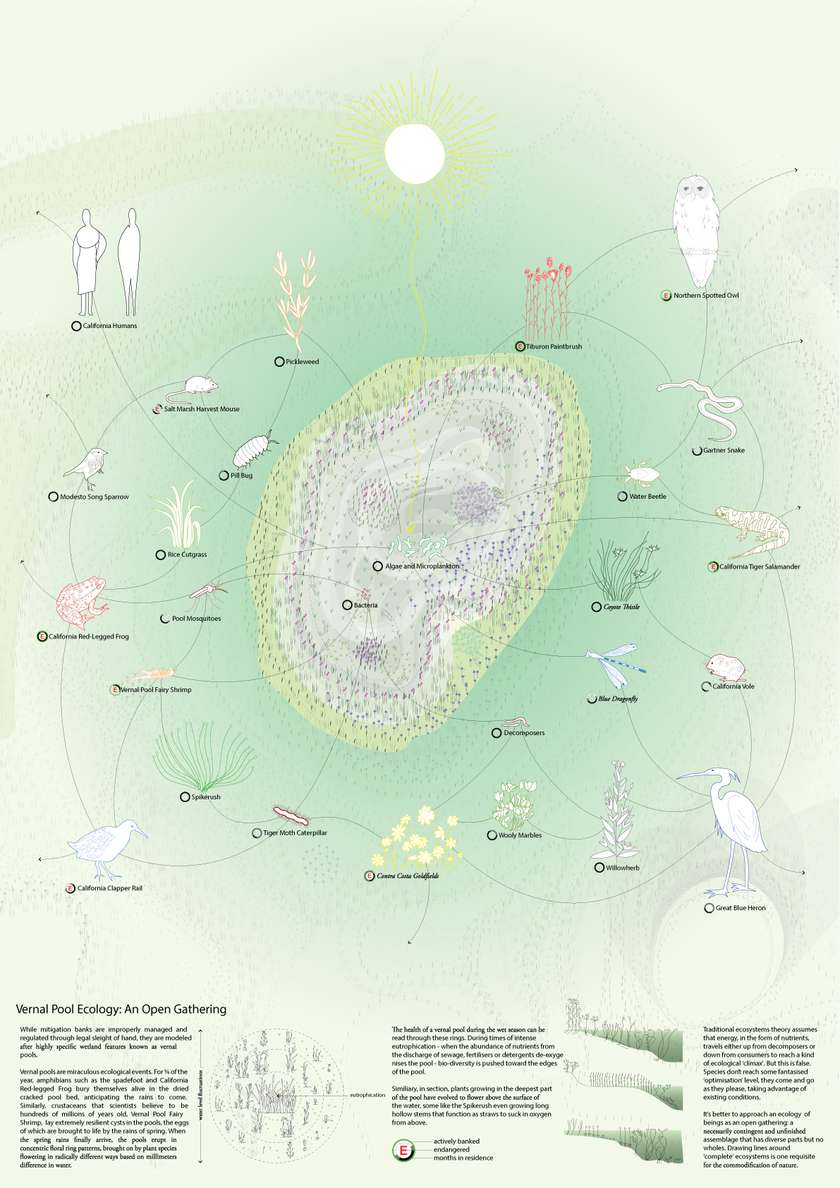
While mitigation banks are improperly managed and regulated through legal sleight of hand, they are modelled after highly specific wetland features known as vernal pools.
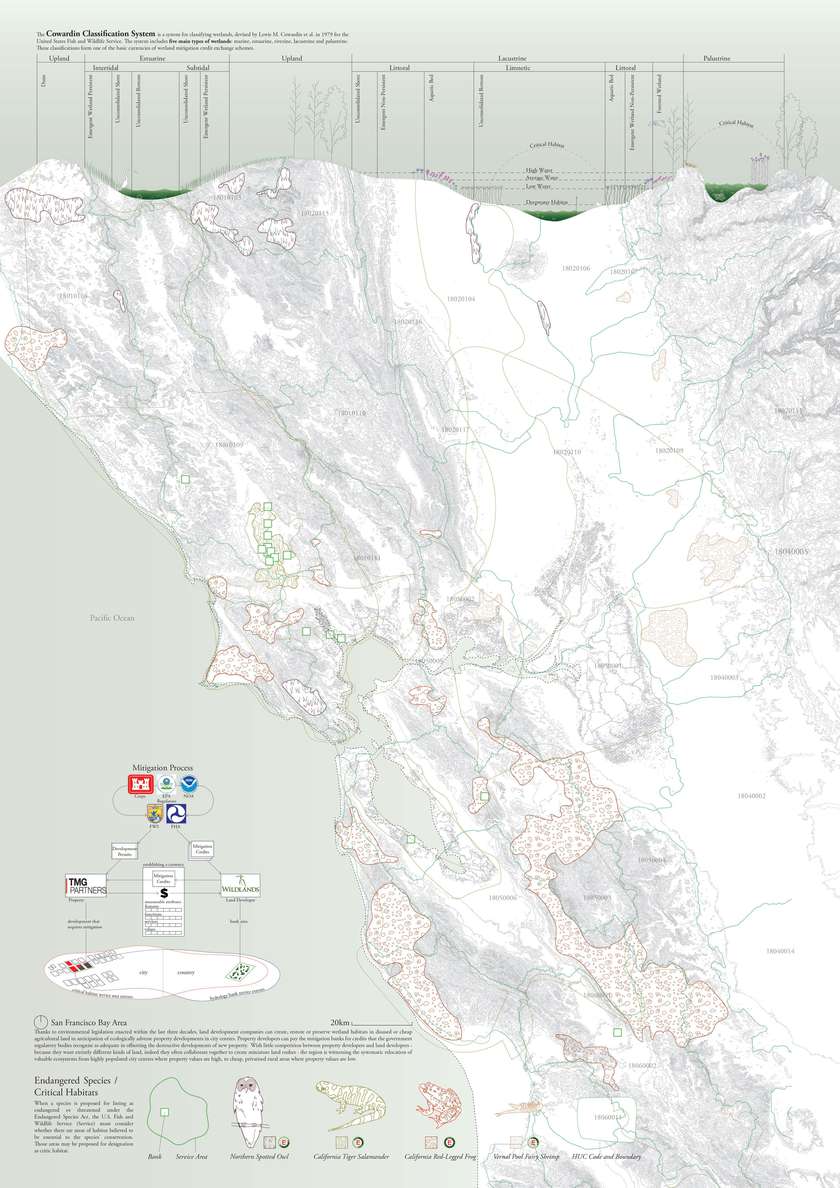
The state of California boasts the highest number of endangered and therefore banked species in the world, thanks in part to its history of wildlife conservation, it’s enthusiasm toward the green economy and its liberal commitment to financial speculation.
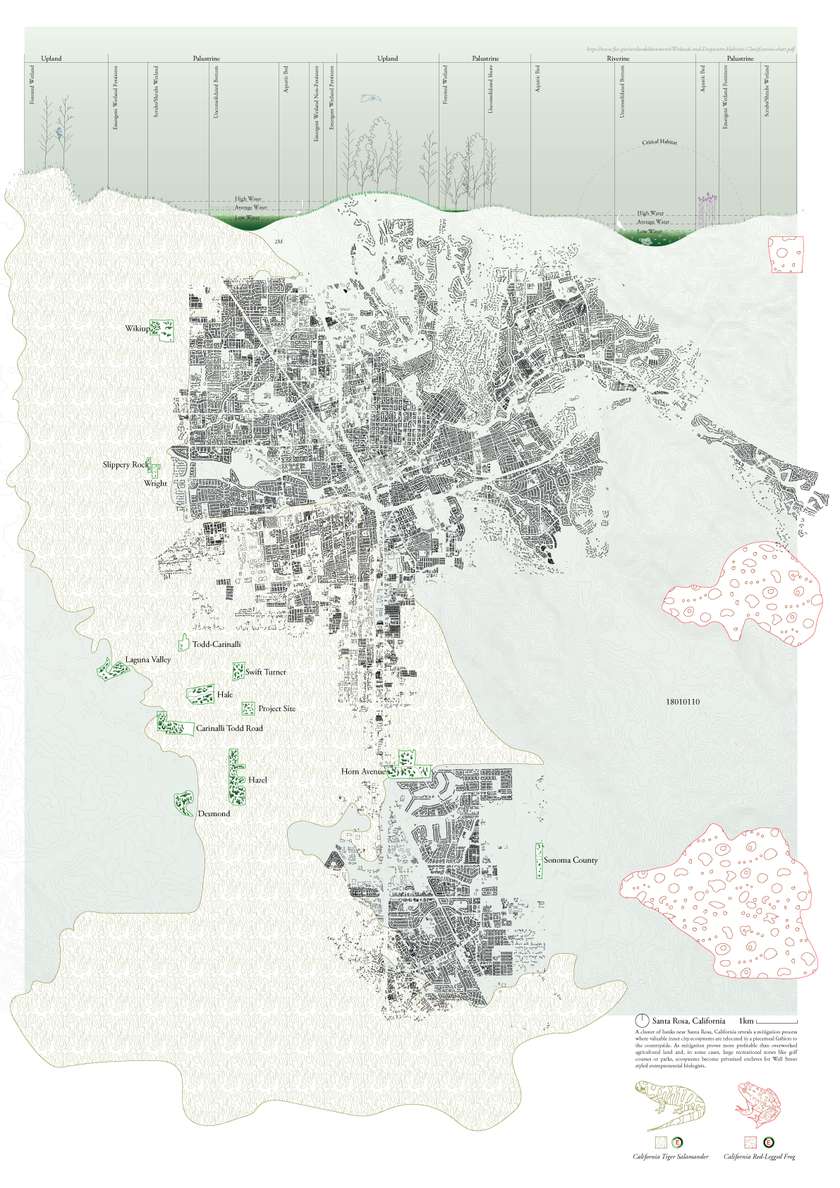
A cluster of banks near Santa Rosa, California, reveals a mitigation process where valuable inner city ecosystems are relocated in a piecemeal fashion to the countryside.
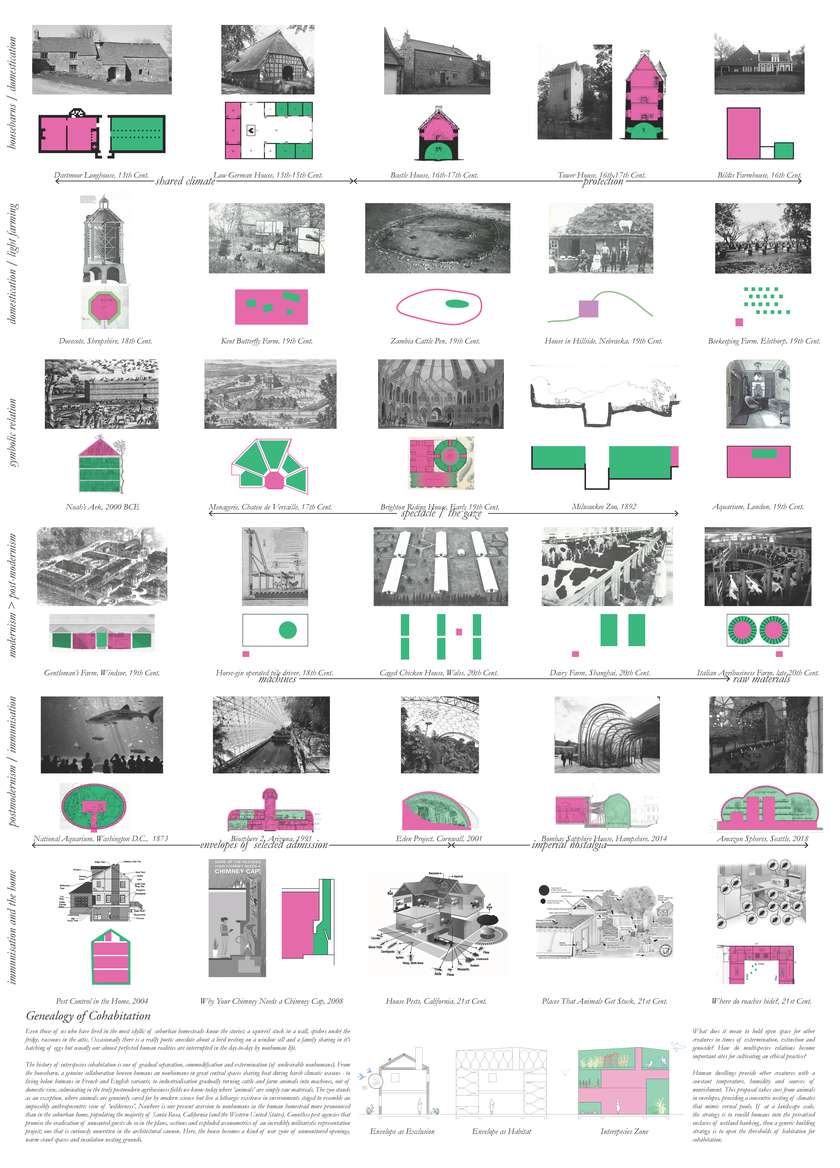
The history of interspecies cohabitation is one of gradual separation, commodification and extermination. From the housebarn, a genuine collaboration beween humans an nonhumans in great central spaces sharing heat during harsh climatic seasons - to living below humans in French and English variants, to industrialisation gradually turning cattle and farm animals into machines, out of domestic view, culminating in the truly postmodern agribusiness fields we know today.
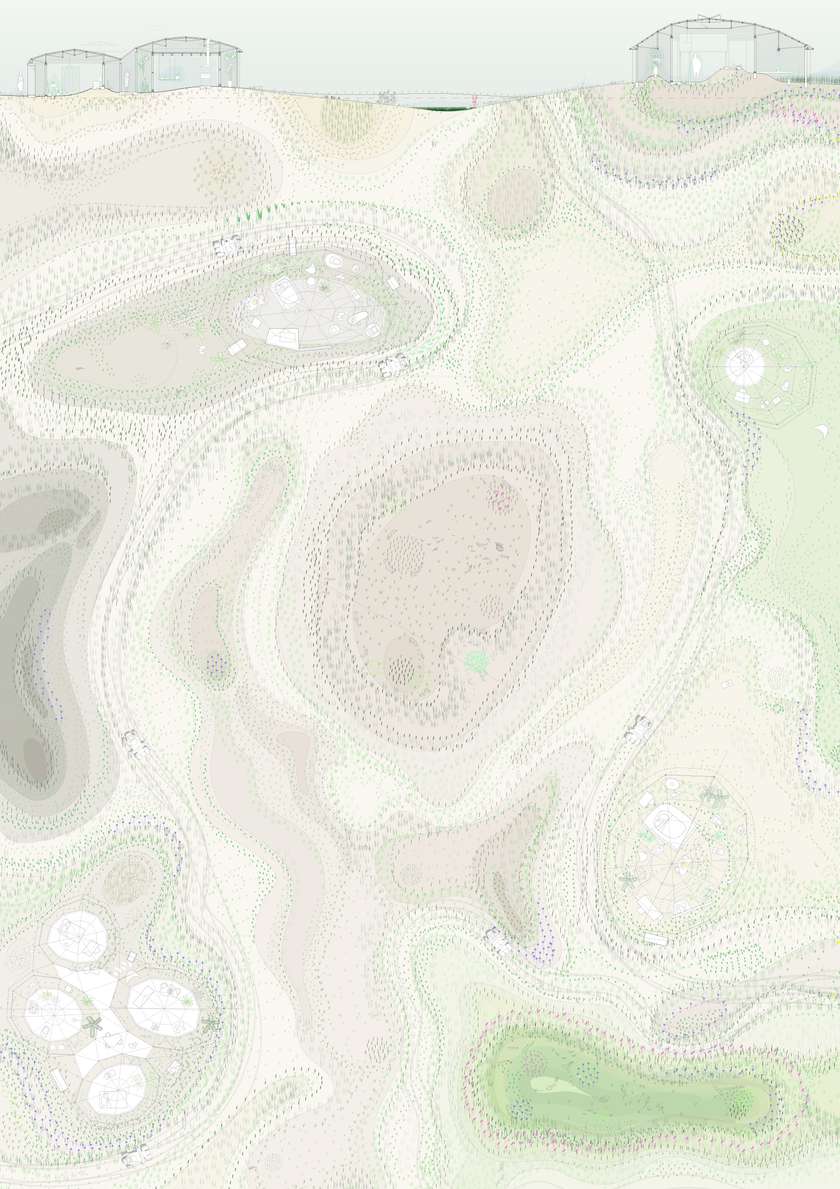
The composition of the Vernal Estate takes cues from the pools from which they are named, providing a concentric nesting of climates that humans and nonhumans can take advantage of. Most of the human dwelling happens in an expanded occupation of the site while the pools are dry and contracted. When the pools are flooded, the site is unified by the grasses and species of the vernal event.